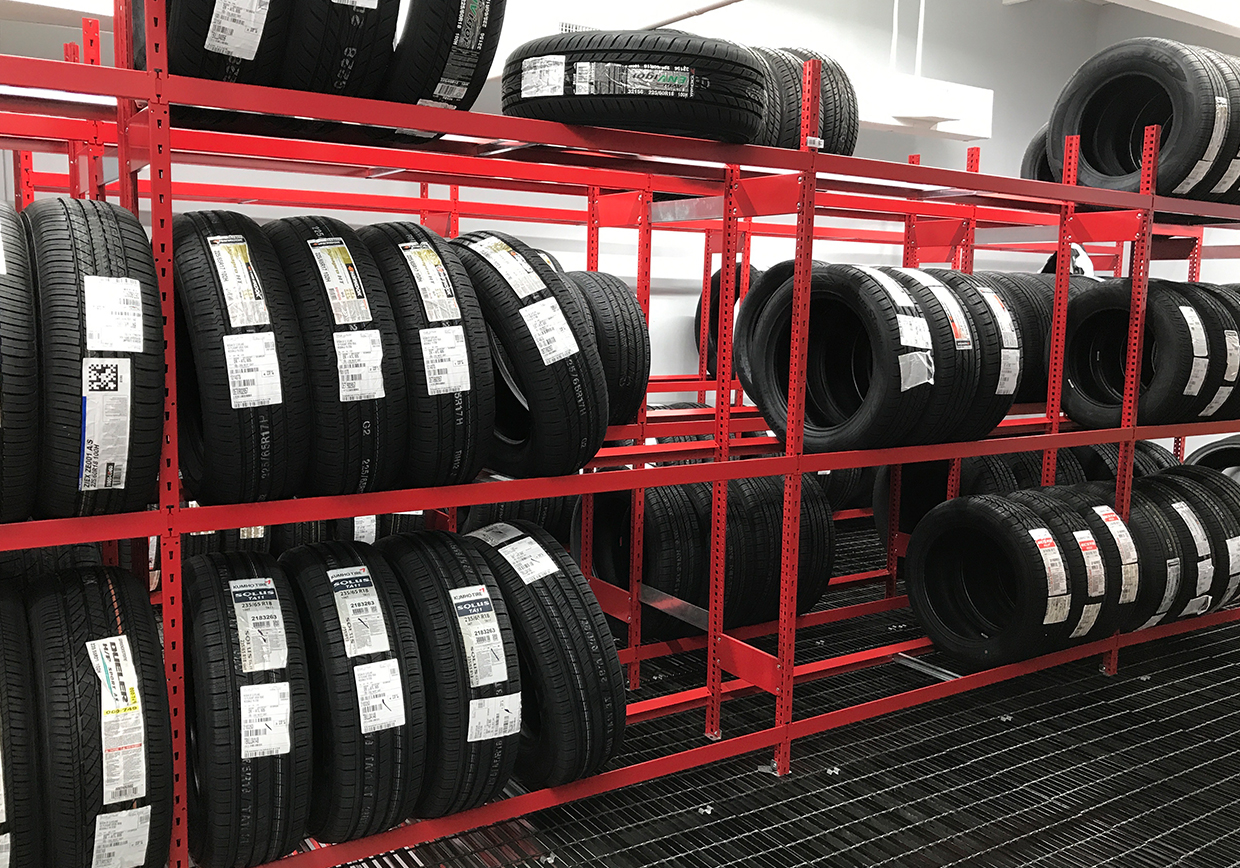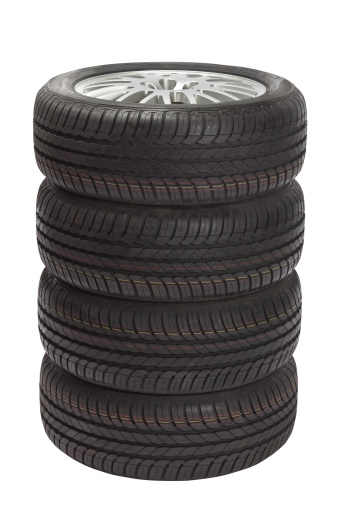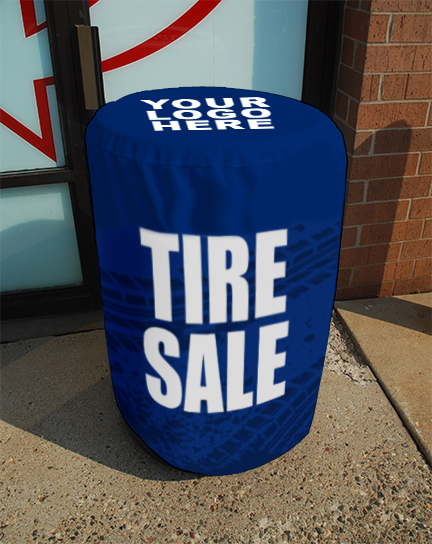
|
B arry's Tire Tech
This is a series of articles on the technical aspects of tires, their care and usage.
My primary purpose in these articles is to help people understand tires and thereby reduce the risks we all face every day.
..........and since tires is just about the only thing I know about..........
Please drop me a note if you have a topic you want to see:
Barry@BarrysTireTech.com
|
|
Short Version:
- Store tires in a cool, dark place away from sources of heat and ozone (furnaces, electric motors)
- Store tires unloaded
- Not on the vehicle unless the vehicle is lifted off the ground
- If the tires are on a vehicle that is being stored, inflate them 50% more than normal
- Yes, the tire will be able to handle it. Tires don't burst until many times the max pressure listed
on the sidewall
- It's OK to stack them
- Not too high. 4 high at most.
- But Not on or in anything that is harmful - for example: oil
- And NOT on something that shouldn't be stained. That includes concrete/tiled floors.
- Even a layer of paper is not enough to prevent a stain.
- If the tires have white sidewalls or raised white letters, store them white to white
- But be careful as white rubber can be stained by black rubber.
- If mounted, it's OK to store them at normal pressure.
- Don't do anything about inflation pressure until you reinstall them.
- No need to deflate them as it doesn't have much affect on anything.
- Don't deflate them if you're going to stack them.
- Unless you are going to use spacers so the stacking is wheel to wheel, rather than tire to tire.
- Avoid petroleum products
- Tires can leave a stain. Avoid surfaces that shouldn't be stained.
- If the tires are Extreme Summer Performance or racing tires,
do NOT store them where the temperature gets below 40°F (5°C).
|

|
When the topic is storing tires, you usually wind up with a list of"DON'T's", so I'm going to approach
this in a more positive manner!
- Store tires in a cool, dark place. Tires don't like heat, so avoid furnaces. And sunlight generates heat.
(Normal room lighting is fine!)
- Beware of places that are too cold. Some types of rubber are prone to cracking when the temperature is low.
These types of rubber can be found in Extreme Summer Performance tires, Track Day tires, and racing tires. Usually 40°F
(5°C) is quoted as the lower limit. Other types of tires don't have these kinds of problems.
- Avoid electric motors. They generate ozone - which is a more reactive form of oxygen! Ozone is also
generated by some air purifiers (ionizers) and by electric arc welders.
- Rubber absorbs petroleum products, so gas cans and lawn mowers should be avoided. Oily floors, too!
|
- If you are storing a vehicle, get the weight off the tires . A flat spot can develop - and some become permanent
if enough time goes by.
- Remove the wheels (and tires) from the vehicle
- Or use jack stands. It's OK if the tires barely touch the ground!
- Or move the vehicle every other month! A 6" movement will do! Back and forth is OK.
- Or pump up the tires
- + 50%!! if your compressor goes that high!
- Don't worry. The burst pressure of tires is many times the max pressure listed on the sidewall!
|

|

|
- It's OK to stack tires - one top of another, like to the left.
- But white rubber can be stained, especially by black rubber, so you'll want
stack them white to white - and even then it's possible for the white rubber to get stained.
- Put something between the WSW and OWL tires, like card stock or cardboard - not paper! (Too thin!)
- Or put blocks of wood in the wheels so the sidewalls don't touch
- It's OK to leave the inflation pressure just as you removed then from the car. The affect oxygen
has on tires is slow.
- But don't forget to adjust the pressure before you install them back on the vehicle!
- Removing the pressure makes stacking more problematic.
|
|
Yes! It's OK to cover them!
- A cover not only looks nice but also keeps those smelly gases contained.
- It also helps slow tire aging.
- But be careful - tires stain!
|

|

|
The storage system to the left looks great!
EXCEPT
Rubber can leave stains. So unless there are spacers that are hidden behind the tires, the owner is
not going to like how this will look in a few years.
|
- Avoid oil and other petroleum products, such as gasoline.
- That means lawn mowers and snow blowers!
- Needless to say, avoid oily puddles!
|

|






